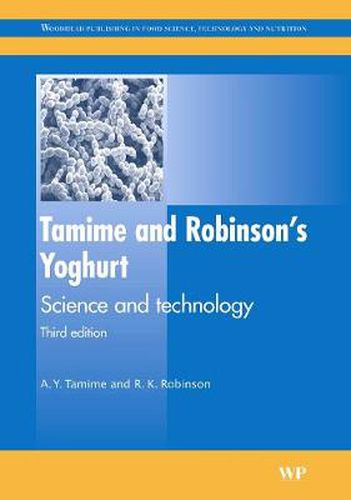Readings Newsletter
Become a Readings Member to make your shopping experience even easier.
Sign in or sign up for free!
You’re not far away from qualifying for FREE standard shipping within Australia
You’ve qualified for FREE standard shipping within Australia
The cart is loading…






Previous editions of Yoghurt: Science and Technology established the text as an essential reference underpinning the production of yoghurt of consistently high quality. The book has been completely revised and updated to produce this third edition, which combines coverage of recent developments in scientific understanding with information about established methods of best practice to achieve a comprehensive treatment of the subject. General acceptance of a more liberal definition by the dairy industry of the term yoghurt has also warranted coverage in the new edition of a larger variety of gelled or viscous fermented milk products, containing a wider range of cultures.
Developments in the scientific aspects of yoghurt covered in this new edition include polysaccharide production by starter culture bacteria and its effects on gel structure, acid gel formation and advances in the analysis of yoghurt in terms of its chemistry, rheology and microbiology. Significant advances in technology are also outlined, for example automation and mechanisation. There has also been progress in understanding the nutritional profile of yoghurt and details of clinical trials involving yoghurts are described.
This book is a unique and essential reference to students, researchers and manufacturers in the dairy industry.
$9.00 standard shipping within Australia
FREE standard shipping within Australia for orders over $100.00
Express & International shipping calculated at checkout
Previous editions of Yoghurt: Science and Technology established the text as an essential reference underpinning the production of yoghurt of consistently high quality. The book has been completely revised and updated to produce this third edition, which combines coverage of recent developments in scientific understanding with information about established methods of best practice to achieve a comprehensive treatment of the subject. General acceptance of a more liberal definition by the dairy industry of the term yoghurt has also warranted coverage in the new edition of a larger variety of gelled or viscous fermented milk products, containing a wider range of cultures.
Developments in the scientific aspects of yoghurt covered in this new edition include polysaccharide production by starter culture bacteria and its effects on gel structure, acid gel formation and advances in the analysis of yoghurt in terms of its chemistry, rheology and microbiology. Significant advances in technology are also outlined, for example automation and mechanisation. There has also been progress in understanding the nutritional profile of yoghurt and details of clinical trials involving yoghurts are described.
This book is a unique and essential reference to students, researchers and manufacturers in the dairy industry.